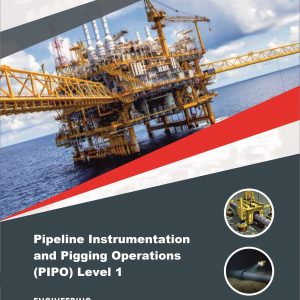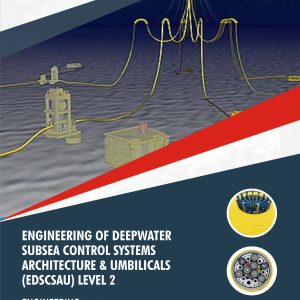Description
Subsea engineering is a branch of engineering that involves the design, installation, operation, and maintenance of underwater structures, systems, and equipment. Subsea engineering is used in various industries such as oil and gas, telecommunications, marine research, and renewable energy.
In the oil and gas industry, subsea engineering is used to design and construct subsea production systems, including subsea wells, pipelines, manifolds, risers, and control systems. These systems are installed on the seabed to extract oil and gas from offshore reservoirs. Subsea engineers are responsible for designing and installing the subsea equipment and systems, as well as ensuring their safe and efficient operation.
Subsea engineering also plays a crucial role in the telecommunications industry, where it is used to design and install underwater communication cables. These cables provide high-speed internet and telecommunications connectivity to remote areas.
Subsea engineering is also used in marine research to design and operate subsea vehicles, such as remotely operated vehicles (ROVs) and autonomous underwater vehicles (AUVs), which are used to explore and map the ocean floor.
Renewable energy is another area where subsea engineering is becoming increasingly important. Subsea systems are used in offshore wind farms to anchor the wind turbines to the seabed and to transport electricity from the turbines to the shore.
Subsea engineering requires a combination of technical knowledge, problem-solving skills, and creativity. Subsea engineers typically have backgrounds in mechanical, civil, or marine engineering, and they may specialize in areas such as structural design, pipeline design, or control systems. Subsea engineering involves working in challenging environments, often in harsh weather conditions, and requires a strong commitment to safety and environmental protection.
SEMBC Level 1 & Level 2 course explores all the major aspects of processes, technologies and systems involved in subsea oil and gas production, examining the building blocks of subsea engineering, including the key components, Field Development, Wellheads, Xmas Trees and Manifolds, Pipelines, Flowlines and Risers, Subsea Control Systems, Umbilicals and Equipments, Reliability, Maintenance and New Technologies along with real time case studies. It also covers in details ROV Intervention, Interface Requirement & Tooling Mechanisms along with pre-commissioning, commissioning, hook ups & decommissioning of FPSO’s & Offshore Structures.
Course Outline
Subsea Production Systems
Subsea Field Architecture
Subsea Distribution Systems
Offshore & Subsea Surveys
Subsea Structures Installation and Vessels
Subsea Cost Estimation
Subsea Control Systems
Subsea Power Supply
Subsea Project Execution and Interfaces
Module 1: Overview of Subsea Remote Intervention and Vehicles
ROV technologies and capabilities
Requirements for subsea operations
Module 2: ROV Intervention Operations
Site Survey
Drilling Assistance
Installation Assistance
Operation Assistance
Inspection, Maintenance and Repair
ROV Intervention
Module 3: ROV Intervention & Interconnection System
ROV intervention systems
Interconnections & Characteristics
Interconnecting systems configurations
Module 4: ROV Interface Requirements Based on API 17H
Requirements ROV interfaces and is based primarily on API 17H
Hydraulic Work Package and Docking Frame
Hydraulic Connector & Valve Override Tool
Adapter for the ROV Manipulator
Subsea Systems
Module 5: Remote Operated TOOL (ROT)
ROT Configuration, Generations of ROT for tie-in tools
Total Commissioning Activity
Project Commissioning Schedule
Process for Handling of Commissioning Queries
Mechanical Completion Structural, Mechanical, Piping, Electrical & Hand Over
Pre-Commissioning (PC)
Commissioning
Typical Commissioning Preparation Activities
Commissioning Documents and Handover to Operations
FPSO Turrent Commissioning & Challenges
Drilling Rig Commissioning
Subsea Structures Commissioning – Xmas Tree,
Manifolds, PLEM, PLET, Jumpers, Spools etc
Decommissioning Requirements and Activities – Platform
Removal, Subsea Structures and FPSO
Assessment
Participant underpinning knowledge of subsea engineering at masters Level 1 & Level 2 shall be accessed with short answer multiple-choice questionnaire and case studies at the conclusion of the course.
Outcome
Participants will gain an in debt understanding of subsea engineering at master’s level 1 & Level 2. They will also be able to function with minimum supervision as Subsea Production Systems and Services (SPS&S) Systems Engineer for IOCs, offshore & subsea systems service contractor, vendor or installation company.
In addition; shall be able to:
- Create and contribute to the subsea system master equipment list and master document register.
- Deliver subsea system field layouts and distribution schematics along with subsea system design basis and functional design specifications.
- Assist in subsea systems material selection and corrosion protection philosophy.
- Contribute to internal and external interfaces.
- Contribute towards flow assurance, hydrate management and thermal design
- Contribute to intervention, inspection, maintenance and repair strategy
- Support subsea system integrating testing program & technical risk management plan including HAZOP & HAZID. In addition; support reliability management incl. RAM analysis, FMECA and SIL engineering.
Note:
Subsea Production Systems and Services (SPSS) Systems Engineer has technical responsibility for during execution phase of a typical Subsea Project.
Professional Certificate
Issued directly by Chess Subsea Engineering Europe.
Participant may be presented for Offshore Petroleum Training Organization (OPITO) Certification.
How to Register
Click here to download registeration booklet on msword and email completed booklet to info@chesssubseaengineering.org directly.










